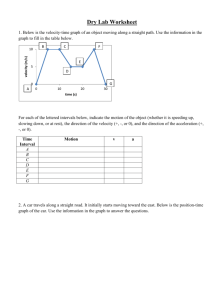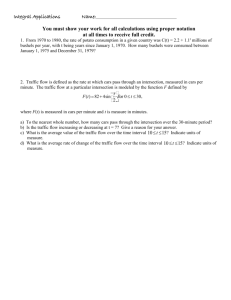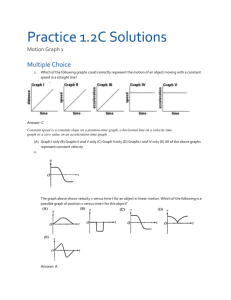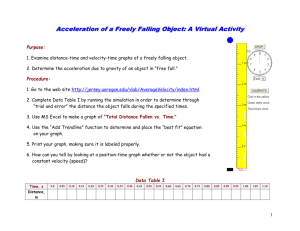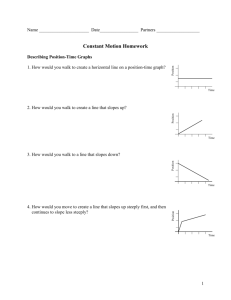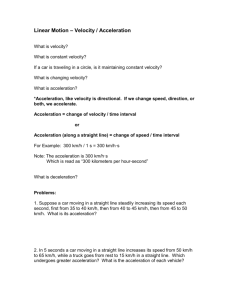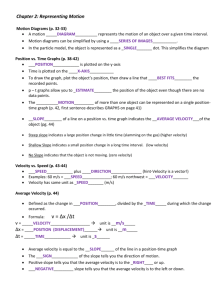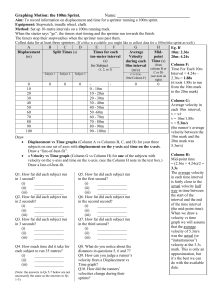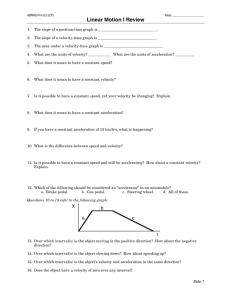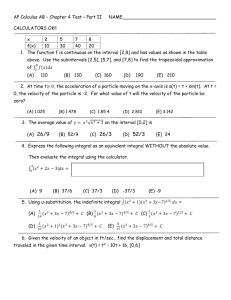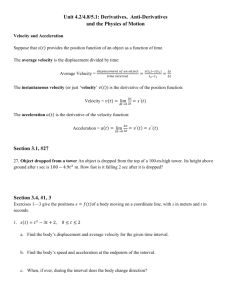Constant Velocity
advertisement
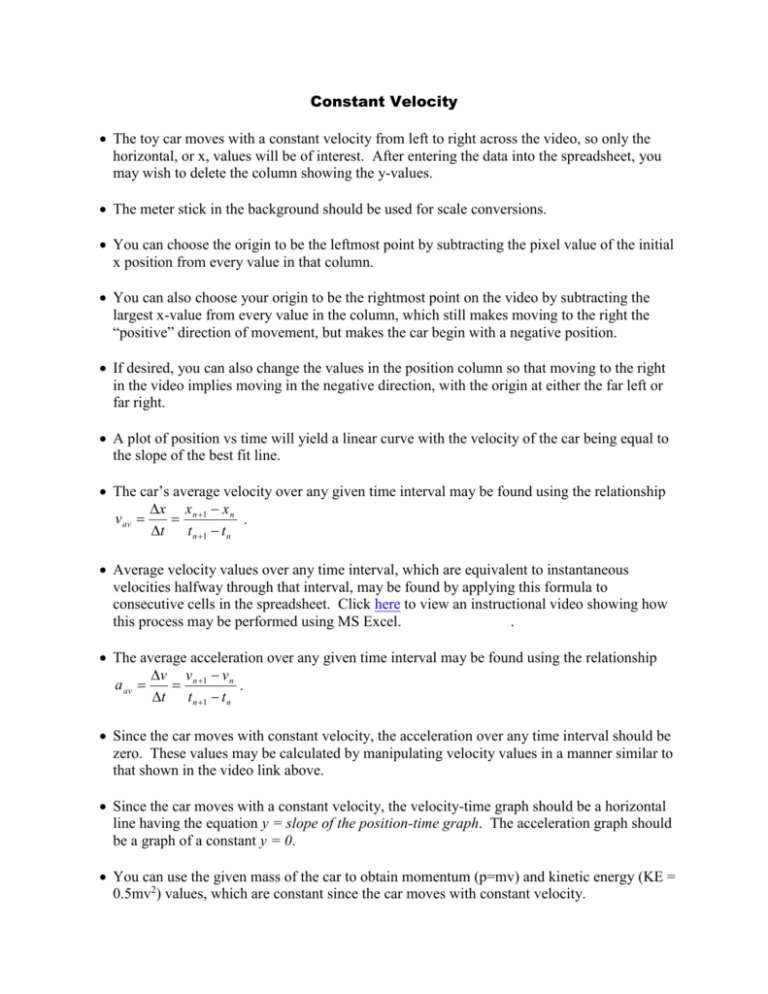
Constant Velocity The toy car moves with a constant velocity from left to right across the video, so only the horizontal, or x, values will be of interest. After entering the data into the spreadsheet, you may wish to delete the column showing the y-values. The meter stick in the background should be used for scale conversions. You can choose the origin to be the leftmost point by subtracting the pixel value of the initial x position from every value in that column. You can also choose your origin to be the rightmost point on the video by subtracting the largest x-value from every value in the column, which still makes moving to the right the “positive” direction of movement, but makes the car begin with a negative position. If desired, you can also change the values in the position column so that moving to the right in the video implies moving in the negative direction, with the origin at either the far left or far right. A plot of position vs time will yield a linear curve with the velocity of the car being equal to the slope of the best fit line. The car’s average velocity over any given time interval may be found using the relationship x x n 1 x n v av . t t n 1 t n Average velocity values over any time interval, which are equivalent to instantaneous velocities halfway through that interval, may be found by applying this formula to consecutive cells in the spreadsheet. Click here to view an instructional video showing how this process may be performed using MS Excel. . The average acceleration over any given time interval may be found using the relationship v v n 1 v n a av . t t n 1 t n Since the car moves with constant velocity, the acceleration over any time interval should be zero. These values may be calculated by manipulating velocity values in a manner similar to that shown in the video link above. Since the car moves with a constant velocity, the velocity-time graph should be a horizontal line having the equation y = slope of the position-time graph. The acceleration graph should be a graph of a constant y = 0. You can use the given mass of the car to obtain momentum (p=mv) and kinetic energy (KE = 0.5mv2) values, which are constant since the car moves with constant velocity.

